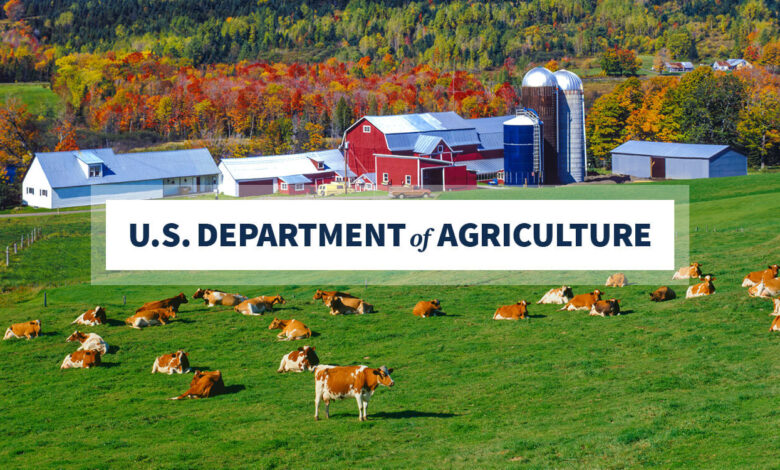FACT SHEET: Celebrating Two Years of the Inflation Reduction Act

WASHINGTON, DC, August 16, 2024 – Two years ago, President Biden signed the Inflation Reduction Act, the largest investment in climate action and clean energy in world history. Key to the Biden-Harris Administration’s Investing in America agenda, this transformative law is lowering energy costs, creating new income streams, and tackling the climate crisis. The Inflation Reduction Act has given the U.S. Department of Agriculture (USDA) historic resources to better serve communities nationwide.
“Through the Inflation Reduction Act, the Biden-Harris Administration ushered in a new era of innovation, prosperity for rural communities, and climate preparedness,” said Agriculture Secretary Tom Vilsack. “The historic resources it provided have helped USDA meaningfully improve the lives of every American by lowering energy costs, reducing wildfire risk, and bringing more farmers into our high-demand conservation programs, and more.”
Combined with President Biden’s historic Bipartisan Infrastructure Law, American Rescue Plan, and other investments already underway, the Inflation Reduction Act makes a once-in-a-generation investment that supports rural communities and their infrastructure needs, while adapting to the climate crisis and creating better health outcomes for rural communities. Across USDA programs, the Inflation Reduction Act increases access to lower-cost clean energy, and climate-smart agriculture and conservation while creating good paying jobs. The legislation also protects communities from the increasing risks of wildfires and extreme heat.
These investments are contributing to the Biden-Harris Administration’s Justice40 initiative which aims to ensure 40 percent of the overall benefits of certain Federal climate, clean energy, affordable and sustainable housing, and other investments flow to disadvantaged communities that are marginalized by underinvestment and overburdened by pollution.
Building a Clean Energy Future
USDA is making the largest single investment in rural electrification since the Rural Electrification Act of 1936. In 2023, USDA made $13.2 billion available to build electrification infrastructure in rural America with clean, affordable, reliable energy and enhance the quality of life in rural communities. USDA is deploying this funding to ensure communities have access to clean energy that lowers their energy costs and generates new income.
With Inflation Reduction Act funding, USDA:
- Provided more than $525 million for 14 new clean energy projects that serve rural Americans through partially forgivable loans through the Powering Affordable Clean Energy (PACE) program. USDA made $1 billion available in May 2023, and continues to roll out awards.
- Invested $605 million in 4,529 projects that help agricultural producers and rural small businesses invest in renewable energy systems and make energy-efficiency improvements through the Rural Energy for America Program (REAP). Since the beginning of the Biden-Harris Administration, USDA has invested $2.2 billion in over 7,200 REAP projects.
- Announced $181 million to support 222 projects through the Higher Blends Infrastructure Incentive Program (HBIIP) to increase the availability of domestic biofuels and give Americans additional cleaner fuel options at the pump.
- Will award $9.7 billion through the Empowering Rural America (New ERA) Program that will help rural Americans transition to clean, affordable, and reliable energy. USDA is currently reviewing applications and expects to start announcing awards in the fall.
Investing in Climate-Smart Agriculture and Forestry
The Inflation Reduction Act takes aggressive action to address the climate crisis by making unprecedented funding available for USDA conservation, forestry and climate-smart agriculture programs.
The Act made $19.5 billion available for NRCS to address the demand for popular conservation programs that provide financial assistance to farmers and ranchers to help them both protect natural resources and enhance production. For Fiscal Year 2023, NRCS released data showing an investment of over $2.8 billion in financial assistance for conservation and supported more than 45,000 contracts, more than any year in the agency’s 89-year history. The agency released state-by-state data showing where investments went in FY23 for Farm Bill and Inflation Reduction Act funding.
For Fiscal Year 2024, which began October 1, 2023, the Inflation Reduction Act provided $1.65 billion for the Environmental Quality Incentives Program (EQIP), $754 million for the Regional Conservation Partnership Program (RCPP), and $472 million for the Conservation Stewardship Program (CSP). In Fiscal Year 2023 and so far in Fiscal Year 2024, NRCS has partnered with over 18,000 landowners to converse 6.2 million acres through EQIP; and more than 5,800 to conserve nearly 7 million acres through CSP.
To further support conservation and climate-smart agriculture, NRCS also:
- Announced $90 million for 53 Conservation Innovation Grant (CIG) projects to support the development and adoption of new tools, practices and technologies to further natural resource conservation and improve agricultural operations on private lands, including targeted projects to address enteric methane.
- Invested $138 million for new climate-smart conservation easements that farmers and ranchers use to conserve wetlands, grasslands and prime farmlands through the Agricultural Conservation Easement Program (ACEP).
The Inflation Reduction Act included $300 million to improve measurement, monitoring, reporting and verification (MMRV) of greenhouse gas emissions and carbon sequestration in climate-smart agriculture and forestry. NRCS continued to implement this strategy and released a set of webinars in July 2024 to provide public updates on implementation.
Building on the investments made in the Bipartisan Infrastructure Law, the Inflation Reduction Act also made $4.9 billion in additional funding available to the Forest Service to protect communities from wildfire and invest in climate smart forestry.
Some notable examples of Forest Service investments from the Inflation Reduction Act include:
- More than $1 billion in competitive grants to increase equitable access to trees and green spaces in urban and community forests in all 50 states, the District of Columbia, and several U.S. Territories and Tribal Nations.
- $1.2 billion to reduce hazardous fuels and wildfire risk to communities, critical infrastructure, and natural resources across the country.
- $170 million to help conserve private forest lands for their values as places for recreation, as wildlife habitat, and as sustainable sources of wood and other forest products.
- $190 million to help private forest landowners adapt to and mitigate the impacts of climate change and retain working forestlands.
- $145 million to help connect forest landowners with emerging climate markets, supporting rural economies, and allowing underserved and small-acreage forest landowners be part of the fight against climate change.
Creating an Equitable Agricultural Future
The Inflation Reduction Act continues to invest in the future of producers by creating a diverse and equitable agriculture and food workforce, improving access to land and capital, and helping farmers keep farming. Recognizing producers have faced historic challenges as they work to feed and fuel our nation and world, USDA:
- Provided $2.4 billion to over 43,800 distressed direct and guaranteed Farm Service Agency (FSA) loan borrowers, helping them reach long-term stability and operate successful, thriving agricultural businesses.
- Provided $2 billion to 43,000 farmers, ranchers, and forest landowners who experienced discrimination in USDA farm lending programs prior to January 2021.
- Created the Increasing Land Access Program and selected 50 innovative projects totaling $300 million to help improve access to land, capital, and markets for underserved farmers, ranchers, and forest landowners.
- Launched the NextGen program in 2023 to build and sustain the next generation of food, agriculture, natural resources and human sciences workforce by investing $262.5 million in training and support for more than 20,000 food and agricultural leaders through 33 project partners.
For more information on the USDA’s implementation of the Inflation Reduction Act, visit: www.usda.gov/ira.
USDA touches the lives of all Americans each day in so many positive ways. Under the Biden-Harris Administration, USDA is transforming America’s food system with a greater focus on more resilient local and regional food production, fairer markets for all producers, ensuring access to safe, healthy and nutritious food in all communities, building new markets and streams of income for farmers and producers using climate-smart food and forestry practices, making historic investments in infrastructure and clean energy capabilities in rural America, and committing to equity across the Department by removing systemic barriers and building a workforce more representative of America. To learn more, visit www.usda.gov.
#
USDA is an equal opportunity provider, employer, and lender.


